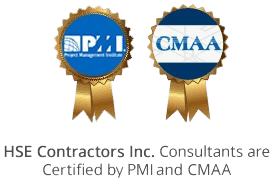- Critical Path Method
- What is CPM Schedule?
- Key Steps in Critical Path Method
- How to Use Pert in Critical Path Method
- What is the difference between CPM Schedule and Baseline Schedule?
- How Accurate is a CPM Schedule?
- Advantages of Critical Path
- Critical Path Software
- CPM Schedule Examples
Interested in Creating an Optimized CPM Schedule?
View Our Consulting ServicesFundamental Benefits of the Critical Path Method
In many ways, nothing is more important to the ultimate success of a project than the manner in which it is managed. A critical path method is a multi-faceted approach to project management, particularly for more complicated endeavors. At the heart of this methodology is the definition of critical versus non-critical project tasks. The ultimate objective is the efficient undertaking of a project, with milestones being met without delays and interruptions.
Through the critical path method, all project activities and their interrelationships are identified. Individual tasks associated with a project, and their pathways, are delineated and plotted. Depending on the nature and needs of a specific project, some tasks are undertaken simultaneously, their associated plotted pathways ensure that progress towards completion occurs as efficiently as possible.
The critical path method is becoming more widely utilized among project managers. There are a variety of significant benefits associated with the critical path in project management.
Effective Scheduling
As noted at the outset, an underlying process of the critical path is the segregation of critical and noncritical tasks. This demarcation permits more effective scheduling of the component tasks as well as the project as a whole.
The effective scheduling permitted through the critical path identifies those tasks and associated pathways to milestones and completion that are vital or critical to the efficient running of the project. The critical path leaves no confusion of which project elements must be undertaken without deviation, let alone interruption, in order to satisfy overall milestones, objectives, and the ultimate goal.
Similarly, the demarcation of non-critical tasks and pathways delineates those components of a project where some time-related float or adjustment can occur. Knowing precisely where these alterations can be made ensures that critical processes are not impeded and the project as a whole remains on schedule.
Enhanced Project Management
The critical path method breaks apart substantial undertakings into elemental parts. The division of even the most complex project in this coordinated manner creates a set of individual, discrete tasks. Through this breakdown of a complex endeavor into discrete tasks enhances and even simplifies project management.
The focus on elemental parts of the project renders it easier to identify the potential for problematic issues and the ability to directly and effectively address them in a timely manner. The critical path also better ensures the proper and timely allocation of resources, including human resources.
Distribution of Human Resources
Another of the benefits associated with the critical path is more efficient distribution of human resources. Time and again when managers are asked about the underlying cause of a project delay, they explain that something or another went awry in regard to the manner in which human resources were allocated.
There are a number of ways in which the suitable distribution of human resources is enhanced through the critical path. First, because an overall project is broken down into component elements, a better pairing of team members and their skills can be made based on the requirements of a specific project pathway.
Second, some projects have experienced team members as well as others who are new and do not have significant backgrounds in regard to a particular type of undertaking. With a critical path and its focus on project components, newer team members can be placed on noncritical project elements. In this way, they can learn more about the project overall, accomplish meaningful milestones, and not cause an interruption on project flow.
Budget and Cost Control
In addition to keeping a project on track timewise, completing an endeavor within budgetary parameters is vital. Budget and cost control are other of the benefits that arise from the utilization of the critical path method.
When a project budget and associated expenditures are tied to subtasks, rather than the project as a whole, spending issues are identified quickly. Thus, they can be addressed more effectively and in a manner that can maintain overall budgetary parameters.
More broadly, because of the ultimate objective of preventing project delays, the critical path aids in preventing cost overruns in another crucial manner. By design, the critical path is designed to prevent project delays. Project delays represent the most significant cause of cost-overruns in complex projects.
Because of the benefits project managers and stakeholders have enjoyed through the use of the critical path, this methodology is expected to continue to be more widely utilized going forward into the future. This includes an expansion of the use of critical path in industries already utilizing this method. It also means a broader use of critical path across different industries.


HSE Contractors is insured by the following professional liability policies, up to $4,000,000 for our clients’ protection:
General Liability.
Workers Comp
Request A Quote For Our Scheduling Services
Our Past Clients

Additional Services
Call Our CPM Scheduling Consultants
Our offices in Orlando, New York City, Boston, Los Angeles, San Francisco, Miami, Tampa, Chicago, Denver, Brooklyn, Dallas and Washington, DC, Offer Innovative and efficient solutions on a variety of construction projects nationwide, Contact Us Today!


